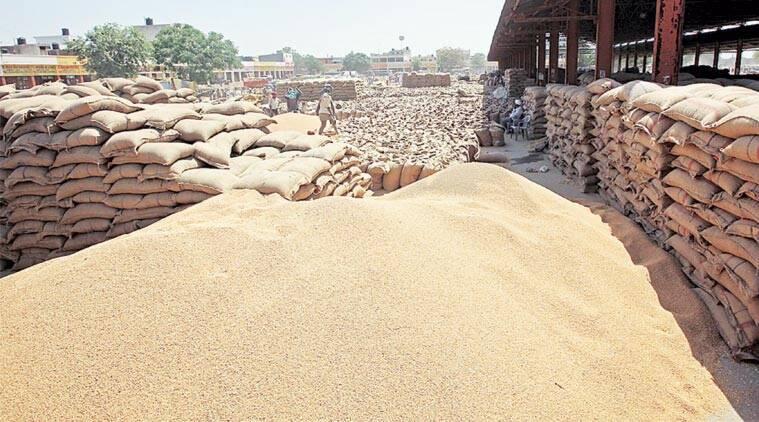Strengthening the MSP System

The MSP system has long been the central topic of discussion in agricultural reforms. Demystifying its pros and cons, PROF M S SRIRAM writes on what we can learn and do to make MSP an effective mechanism that empowers farmers.
——–
ARGUMENTS against a statutory minimum support price (MSP) have hovered around the following lines:
The MSP benefits only a small proportion of Indian farmers, mostly in Punjab and Haryana, and primarily is for rice and wheat. The government can provide written assurances of continuing with MSPs but formalising it into law could shackle the market and might go against the interests of the farmers.
A further argument is that the alternative to the state-run mandi system is opening up markets to the private trade and that Farmer Producer Organisations (FPOs) can act as safety nets against the exploitation by private traders.
Both these arguments have been made recently by the economist Ashok Gulati in a newspaper op-ed.
We would like to address these issues from an alternative vantage point of the fundamental imbalance between farmers and private buyers.
Understanding the structural asymmetries in agricultural trade
Contracts between farmers and buyers are completely asymmetrical. Farmers are at the vulnerable end, being susceptible to multiple uncertainties. The only thing under their control in the area in which the crop could be sown and the inputs that she could apply. Only a part of the uncertainties is addressed by scientific practices, and with assured irrigation and other inputs but ultimately the yield is as much a function of the farmer’s skill as the external environment. Post-harvest, the farmer is usually a price taker because of the size of holdings and quantity of produce, the inability to stock, and the inability to hold out due to the pressing need for money for the next crop cycle.
There is an additional element that the buyer has, and the farmer does not. Buyers can press the “stop-loss” button and walk out of a transaction or the market at their choice. Farmers are stuck the moment they are done with sowing. Apart from abandoning the season, the only path for them is to pump in more inputs and hope for the best.
At the other end is the buyer who has deep pockets, time, and stocks in godowns; has information on the cropped area, crop arrivals in different markets, and an idea of the international situation. The buyer has disproportionate power in the contract, which needs to be balanced against the vulnerability of the farmer.
There is an additional element that the buyer has, and the farmer does not. Buyers can press the “stop-loss” button and walk out of a transaction or the market at their choice. Farmers are stuck the moment they are done with sowing. Apart from abandoning the season, the only path for them is to pump in more inputs and hope for the best. From a public welfare point of view, we cannot subject poor and marginal farmers to both yield and price volatility.
Is opening up the markets the solution?
The importance of the MSP lies in its signalling effects. However, signalling would not work without active market intervention. The importance of Punjab and Haryana and the criticality of the MSP regime in wheat and rice are because of a combination of the two. The active procurement programme and the guaranteed procurement prices in these two states set up a benchmark price and it cannot fall far below in other places. We have heard of people from Bihar and Uttar Pradesh getting their produce to Punjab to take advantage of the MSP – essentially to bridge the arbitrage between the suppressed local prices and the MSP. This is the success of the MSP regime.
A similar situation exists for sugar too, which has a declared fair and remunerative price backed up with the procurement system of the sugar mills. The failure of MSP in other crops lies in the failure of the state to intervene in those markets at an effective scale. When signalling and intervention work together farmers are assured that their crop will fetch them a profit and can make investments with reduced vulnerability.
The government is unable to get a good price for excess stocks beyond the obligations under the Food Security Act. Any equilibrium price that would be discovered by the market is bound to be below the MSP.
State agencies need not procure the entire produce. Crossing a certain threshold is adequate to signal the benchmark and influence the market. For this, government procurement agencies should actively and widely purchase and have adequate storage facilities. As long as it procures adequate produce to influence the market, that is fine.
The reason for this is clear in the data on stockpiles of food grains. The government is unable to get a good price for excess stocks beyond the obligations under the Food Security Act. Any equilibrium price that would be discovered by the market is bound to be below the MSP.

Two contradictory arguments are being extended in the current reform discourse. One is about opening up free procurement outside of the mandis, free movement and removing limits on stockpiling by the market operators. This will create better storage infrastructure and processing facilities, improve the value chain and make agriculture lucrative.
The second argument is that if markets were indeed inefficient due to state intervention, freeing them would help farmers discover better prices and would be in their interests. This argument assumes that the existing interventions inherently suppress prices to the farmers. But this is not the case.
Could we dismantle the procurement system and move to direct benefit transfers (DBTs)? Yes of course – but with grave consequences. We cannot fast forward the building an efficient market system over a graveyard of farmer bankruptcies and suicides.
Opening up the markets at this stage of excessive stocks will suppress prices and result in greater farmer distress. We have to remember that the MSP arrived at by the Commission of Agricultural Costs and Prices (CACP) is based on the cost of cultivation plus family labour (A2+FL) plus a margin. This margin becomes minimal if we factor in imputed rent and interest on capital. The MSP, therefore, is equivalent to the minimum price a farmer can sell without getting into losses. As long as we agree with this logic, the MSP should be the de-facto and de-jure minimum price.
It is argued that the solution is in the markets. The price equilibrium would suppress the “open” procurement price of wheat and paddy and that would disincentivise overproduction. As a result, farmers would diversify to other crops. This would simultaneously remove the pressure on the State to procure (and eventually, disband the procurement programme).
Can the markets bring efficiency into the system? Surely, they could, in their way, if there were no controls and no obligations to have consumer price stability. Could we dismantle the procurement system and move to direct benefit transfers (DBTs)? Yes of course – but with grave consequences. We cannot fast forward the building an efficient market system over a graveyard of farmer bankruptcies and suicides.
Ecological implications of the MSP
The success of the ecosystem of declared prices and a relatively assured procurement system has resulted in excess production of rice and wheat much beyond requirements of buffer stocking and consumption. These crops are also water guzzlers and therefore an ecological disaster. This is a valid argument that needs to be addressed.
In this context, we cannot but argue for a greater role for the state. Fixing the problem requires a nuanced approach which has to maintain stability even as it weans farmers away from water-guzzling crops and towards more diversified agriculture.
The declaration of MSP distorts the cropping pattern, but a return below what the MSP represents goes against the most vulnerable sections of the population who are actively contributing to the economy. The solution to this contradiction is not the disbanding of the MSP regime but in expanding its scope. We need to take the lessons of rice and wheat in Punjab and Haryana and incentivise the production of other crops by signalling an even better MSP.
In this context, we cannot but argue for a greater role for the state. Fixing the problem requires a nuanced approach which has to maintain stability even as it weans farmers away from water-guzzling crops and towards more diversified agriculture. Incentivising alternative crops, better MSPs, and effective procurement systems (whether through the state or binding agreements with the private sector) is how this could be addressed. There needs to be massive public investment in value chain infrastructure, hopefully from the Rs 1 trillion agricultural infrastructure fund announced by the finance minister.
The essential element that the policy-making has to remember is that vulnerability and volatility cannot go together. The farming community is vulnerable at multiple levels. They need the confidence of stability and predictability. That can come through effective procurement and price signalling. Throwing the vulnerable towards volatility will create further asymmetry between the farmer and the buyer, an aspect that we can certainly avoid at this juncture.

What about the fiscal deficit?
This brings us to the elephant in the room. These initiatives will result in a ballooning fiscal deficit. Does the government have the resources? The answer is clear and cannot be anything other than a “No” at this time. The question, therefore, is whether the procurement system could be limited and still be effective. A solution is offered by Reetika Khera, Sudha Narayanan, and Prankur Gupta. They argue for a decentralised procurement system, which limits the amounts that could be procured to a certain quantity per farmer, thereby benefiting the most vulnerable: the small and marginal farmers.
Panacea through FPOs?
The government has advised farmers to take matters into their own hands and build Farmer Producer Organisations (FPOs), which the government will support.
If the private sector cannot purchase crops at or over the MSP because it is not viable, there is no way the FPOs can do so. Throwing in a farmer-owned organisation into this equation merely takes the morality out of the argument: if farmers’ organisations are paying below the MSP, then that is what it is.
The operations of the 10,000 FPOs that the farmers are to be set up will be no different from the private sector players in the market. The only difference is that a significant part of FPO profits goes to the producer-farmers instead of private investors. The procurement system and the value chain rules remain the same. If the private sector cannot purchase crops at or over the MSP because it is not viable, there is no way the FPOs can do so. Throwing in a farmer-owned organisation into this equation merely takes the morality out of the argument: if farmers’ organisations are paying below the MSP, then that is what it is.
In any case, FPOs cannot be engineered overnight. They have to be carefully built as robust institutions. It took 25 years of Amul for India to evolve a blueprint for the national roll-out of member-based dairy co-operatives. It took another 25 years of Operation Flood to spread the message. While these co-operatives largely work, we know that they are not equally successful across all states. By asking farmers to take charge of the value chain themselves, we are throwing back the problem at them and asking them to be aatmanirbhar.
A rebalancing of sectors
There is scope for some re-alignment between the economics of agriculture, which is constantly under stress, and the economics of agribusiness which seems to be doing well not only in terms of profitability but also in stock market performance. This could happen through special taxes and cesses imposed on the ultimate profits of agribusiness enterprises, or creating a legally binding procurement system where the private sector could also have skin in the game. Corporates have the funds and the technology to cover potential losses through futures positions and hedging.
We need the government to be talking openly and transparently to the agribusiness companies on the minimum price and quantity they would commit, ahead of the season, to buy. We need a model purchase assurance contract that the farmers could enter with buyers with a put option, a strong legal backing and a recourse mechanism. If this could be worked out, the current conflict between farmers and the government could end with a lunch supplied by the farmers from their langar.
(MS Sriram is a faculty member of the Centre for Public Policy, IIM Bangalore. The article was first published by India Forum.)
The article was originally published in The Leaflet.
Get the latest reports & analysis with people's perspective on Protests, movements & deep analytical videos, discussions of the current affairs in your Telegram app. Subscribe to NewsClick's Telegram channel & get Real-Time updates on stories, as they get published on our website.
























